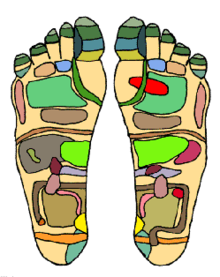Salam semua..
Agak lama jugak admin tidak menulis. Kadang-kadang rasa malas dan segan nak buka laptop pun. Nak menulis pun tentu kena ada peristiwa atau pun berita. Awat ..? tak ada berita ka...bukan macam tu. Sebenarnya bulan Disember adalah bulan yang paling sibuk sekali setiap tahun. Tetapi tahun ini (2014 ) bulan November/Disember adalah bulan yang palik sibuk penuh dengan berita dan peristiwa.
Dengan sekelip mata Malaysia telah terkenal diseluruh dunia dengan berita kehilangan MH370. Tak sampai 3 bulan MH017 pulak ditembak jatuh. Belum sempat nak lupa peristiwa kehilangan 2 buah pesawat Malaysia itu...nah satu lagi pesawat AirAsia ( Indonesia) pulak menjunam kedalam laut Jawa ( Java Sea ). Beratus-ratus jiwa melayang disebabkan mala petaka yang tidak diduga itu. Nanguzubillah-himinanzaliq...
Belum habis lagi neh...Banjir berganda pula melanda Pantai Timur Malaysia...kali ini banjir yang tidak pernah diduga kehebatan impaknya. Beratus-ratus ribu manusia terpaksa mencari perlindungan. Nasib manusia boleh dikatan baiki jugak. Tetapi apa sudah jadi dengan binatang ternakan dan peliharaan...ayam itek, kerbau lembu, kambing dan rusa...Apakah pulak nasib binatang-binatang liar bukan peliharaan manusia yang selama ini bermastautin dan mendapat perlindungan didalam hutan Bagaimanakah nasib monyet, beruk, kera, harimau, pelanduk dan lain-lain makhluk Allah dari sekecil-kecil ulat bulu sehingga sebesar-besar gajah???
Aduh...!! admin dah hilang selera nak menulis selanjutnya mengenangkan peristiwa dahsyat yang telah menimpa makhluk Allah...dariNYA ia datang...dan kepadaNYA jugak dia kembali...Walaupun Admin terselamat dari musibah yang melanda, Tetapi admin juga tidak lepas daripada ketentuan Allah ini. Tiga elemen penting yang menjadi igauan semua hamba Allah yang beriman... Angin..Ayer..dan Api. Admin pernah diuji oleh yang Maha Esa dengan musibah " api ". tetapi Alhamdullillah admin dapat menerima ketentuan Allah itu dengan setinggi kesabaran taqwa dan tawadoq. Admin pun taktahu bilahlah lagi nak " dikembalikan "...Subhanallah!!
Ada lagi ujian dalam bulan Disember 2014 dari Allah untuk admin. Kali ini admin diuji dengan dugaan kerukunan rumah tangga. Masaalah datang bertalu-talu tanpa henti saperti puting beliung membelah awan. Berbagai-bagai rintangan datang dari setiap sudut penghidupan tanpa "warning" Nasib admin adalah lebih baik kerana kesabaran yang ada dalam diri admin telah dapat mengawasi nafsu yang senantiasa dibelengu oleh syaitan itu.
Berikut admin paparkan kata-kata hikmah yang admin pinjamkan dari sahabat-sahabat serta pendita-pendita yang arif dalam urusan kebahgiaan berumah tangga. Boleh diambil dan menjadikan iktibar..Insy'Allah.












